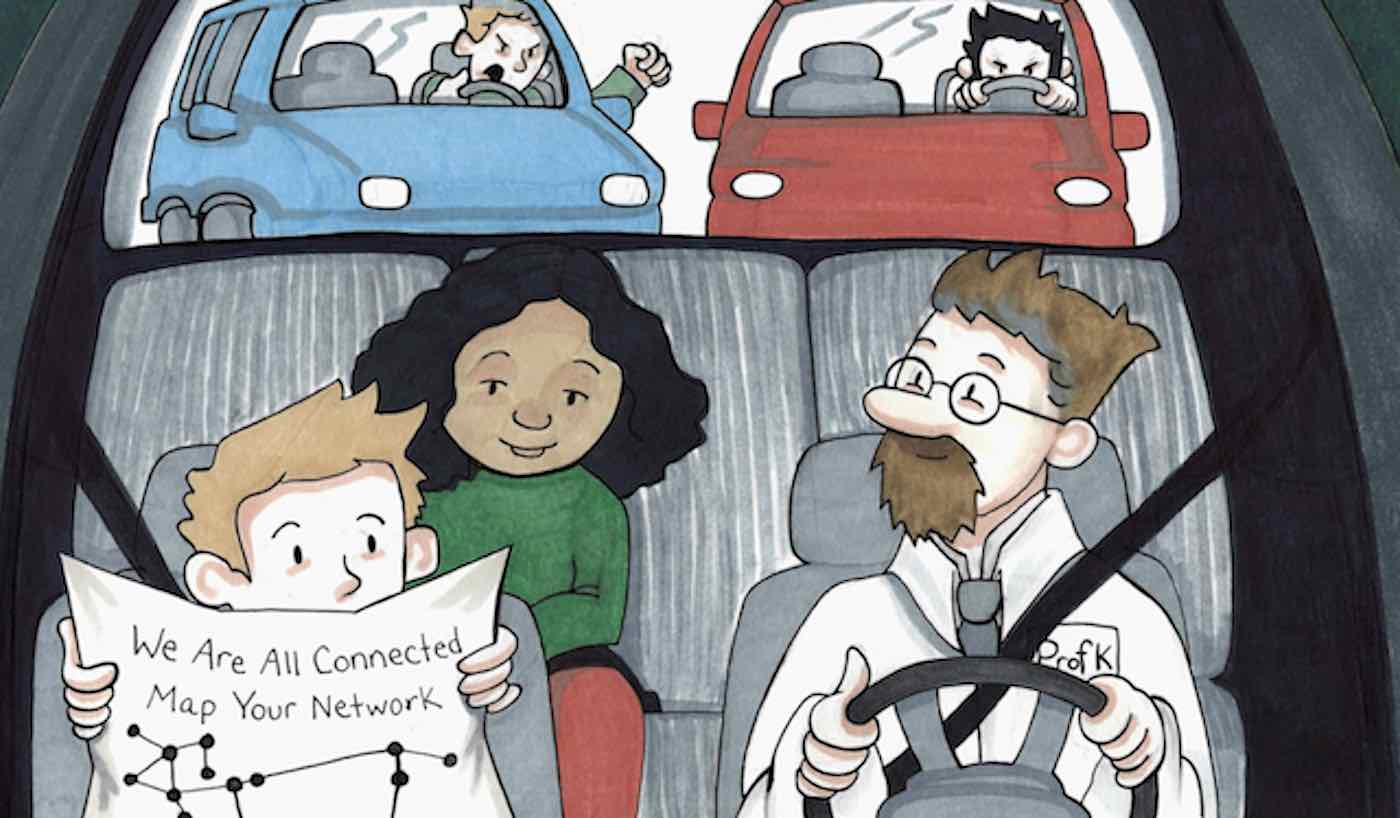(CONTINUED from page 1)
The point of this thought exercise is to illustrate that the events of life are almost never simple. There are multiple factors (variables) affecting how things manifest. As our minds don’t like complexity, however, we tend to reduce the number of variables to as few as possible. We tend to prefer linear logical sequences like “this caused that” (a single causal factor) – and this is also the basis of most scientific experimentation.
One way to visualize how we are connected to each other comes from Stanley Milgram, a 20th century psychologist. Milgram helped develop the concept of “six degrees of separation,” that is, any two people in the world can be connected through their acquaintances with 5 other people. Also referred to as the “small world problem,” it states that you, the reader, is connected to the Dalai Lama, Steph Curry, Taylor Swift and many others through approximately 5 other people. Microsoft researchers more recently confirmed this principle after studying 30 billion instant messages. And social media, as expected, may make that even smaller – Facebook now estimates that everyone shares around 3 degrees of separation.
CHECK OUT: The Science Behind Why We Need More of the ‘Secret Sauce’ of Kindness
While I may have a path that connects me to so many people, that does not address how those connections influence me. Nicholas Christakis and James Fowler, pioneering social network scientists, showed that for a myriad of states, like happiness, loneliness, and even obesity, each person has about three (3) degrees of influence.
That is, if I am happy, the chance that a friend of mine is happy is 15% more likely. And the friend of that friend, the likelihood that he/she is happy is 10% higher. Finally, the friend of a friend of a friend has a 6% higher chance of being happy.
This effect also works similarly for unhappiness and speaks to the idea that emotions are contagious. Reflect on a room that you have walked into and there is someone who is upbeat. You are lifted, at least somewhat, by being in their presence. You share that lift with others. And so the emotion ripples through at least three other people. Now imagine that the driver’s boss was kinder that day—what could have happened?
How do we reconcile this influential, interconnected network with the strong culture of individualism, i.e., we make (control) our own decisions and destinies?
Imagine a piece of fabric that is very broad with many layers. Each thread is a person—it has its own unique shape, quality, color, and resonance. It touches many other threads in all 3 dimensions. The unique and diverse qualities of each thread express themselves through the fabric. Well-woven, the fabric is resilient to challenges, strengthened by its diversity. Kindness and mutual respect are the forces that bind the fabric.
LOOK: Scientist Surprised to Find How Important it is to Have Visual Diet Rich in Kindness Over Cuteness
This fabric was described by Herman Melville, the 19th century author of Moby Dick, who wrote: “We cannot live only for ourselves. A thousand fibers connect us with our fellow men; and among those fibers, as sympathetic threads, our actions run as causes, and they come back to us as effects.”
Look around—see it for yourself and then admire it for its elegance.
Interested in learning more about the science of kindness and its role in your life? Visit EnvisionKindness.org to learn more.
Be Sure And Share This Inspiring Segment Of “The Science Of Kindness” With Your Friends On Social Media…




















